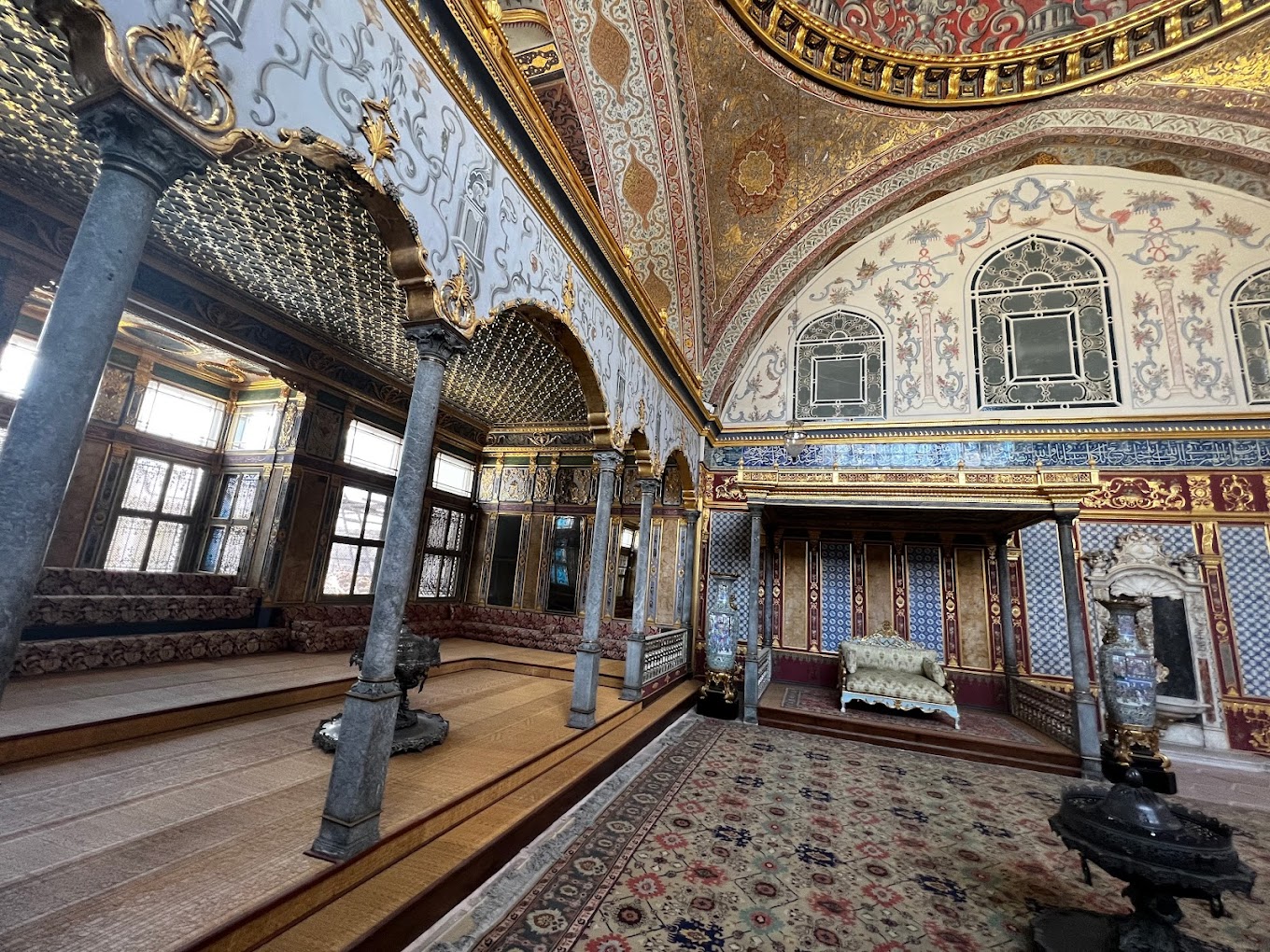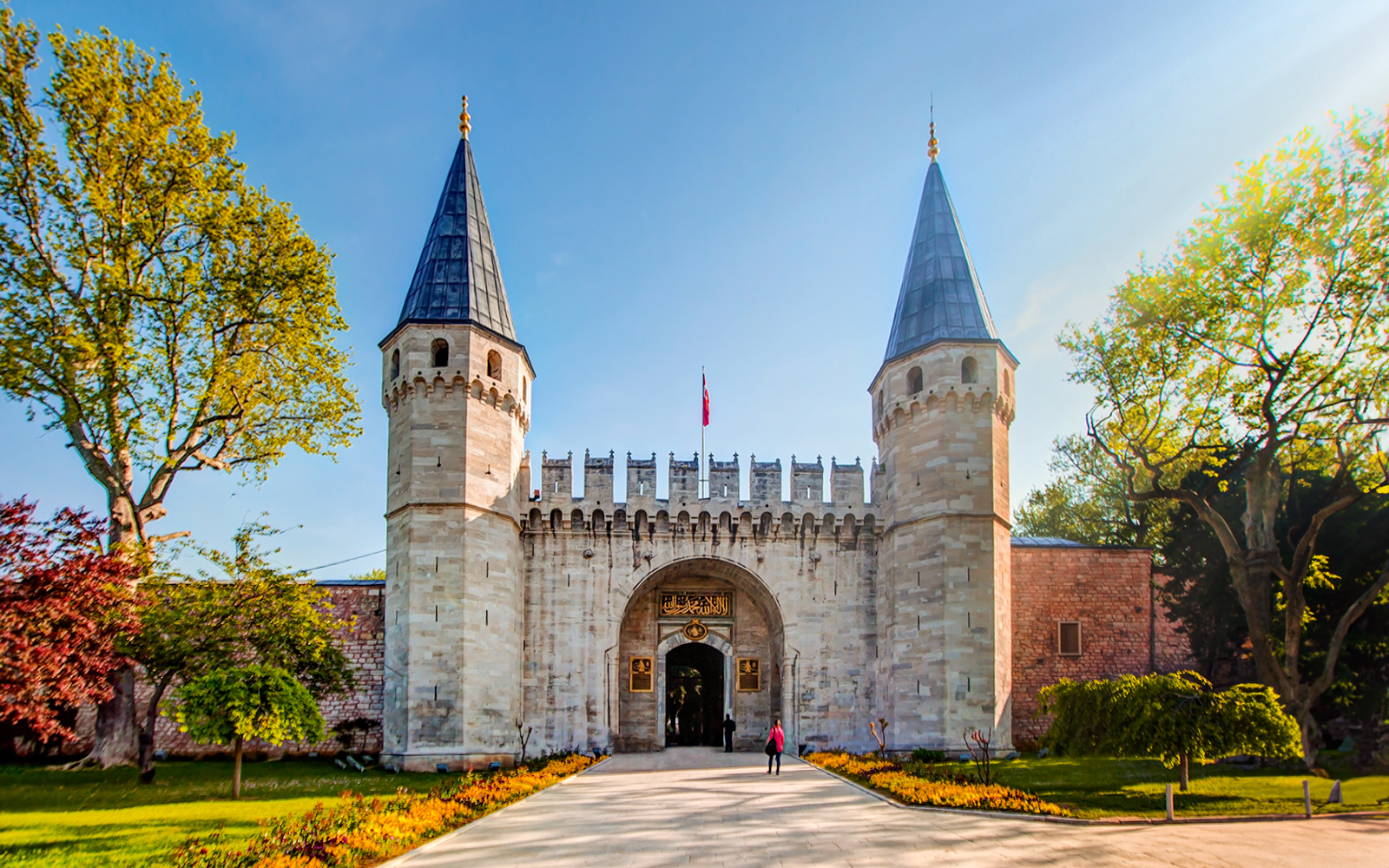In the heart of Istanbul, at the most magnificent point of the Historical Peninsula, a time machine awaits you. This is not just a structure of stone and marble; it's a stage where a world empire was ruled for 400 years, where destinies were written, victories were celebrated, and the deepest secrets were whispered. So, in this unique complex—a legacy of Mehmed the Conqueror and the first museum of the Republic by order of Atatürk—what should you add to the top of your things to do in Topkapi list?. Let's embark on this unforgettable journey together and unveil the secrets within the palace walls.

Wander Through the Mysterious Corridors of the Harem
Perhaps the most intriguing stop on your Topkapi Palace tour will be the Harem-i Hümâyûn (the Imperial Harem). The word Harem, derived from Arabic, means forbidden and private, and it was the exclusive living quarters of the sultan, his family, and the hundreds of attendants who served them, completely isolated from the outside world. This was a self-contained universe with its own rules, hierarchy, and social fabric behind its walls.
As you walk through the Harem, you'll feel as if you're in a labyrinth. This massive complex, consisting of approximately 400 rooms, countless corridors, baths, and courtyards, was not built according to a single plan. Instead, it grew layer by layer over centuries, with each sultan and powerful Valide Sultan (Queen Mother) adding new sections according to the tastes and needs of their era. That's why in one corridor you might be mesmerized by the 16th-century genius of Mimar Sinan reflected in the Iznik tiles, while in the next hall, you could encounter 18th-century Rococo decorations with European influences.
This architectural layering transforms the Harem into a living history book. There are a few key spots you must see during your visit. The apartment of the Valide Sultan, the most powerful woman in the empire, almost shouts her authority with its central location and rich decoration. The Imperial Hall, where ceremonies and entertainments were held, dazzles with its blue-and-white tiles imported from the Netherlands, while the Privy Chamber of Murad III, built by Mimar Sinan, represents the pinnacle of Ottoman tile art. The Golden Road, so named for its gilded decorations, which the sultan walked to reach his private chambers in the Harem, is the most symbolic passage in this mysterious world. The complex structure of the Harem offers the most intense and layered historical narrative you can find among all the places to visit on the Historical Peninsula.

Visit the Chamber of Holy Relics
The spiritual heart of Topkapi Palace is undoubtedly the Chamber of Holy Relics. This is where sacred artifacts of priceless importance, not just for the Ottomans but for the entire Islamic world, are preserved. A significant portion of this unique collection was brought to Istanbul following Yavuz Sultan Selim's conquest of Egypt in 1517. This event was not merely a transfer of treasure but also the most powerful symbol of the Caliphate and the spiritual leadership of the Islamic world passing to the Ottoman Empire.
The Privy Chamber, where the relics are displayed, was originally the private living and working space of Mehmed the Conqueror. Its later dedication entirely to these sacred artifacts demonstrates the extraordinary value placed upon them. In the chamber's dim and serene atmosphere, accompanied by the recitation of the Holy Quran—a tradition that has continued uninterrupted for centuries—you will feel transported beyond time and space.
In the display cases, you can see priceless relics such as the Holy Mantle of the Prophet Muhammad, the reliquary containing a tooth he lost during the Battle of Uhud (Dendan-ı Saadet), his swords, bow, and seal (Mühr-ü Saadet). The collection also includes artifacts believed to belong to other prophets, such as the staff of Moses, the sword of David, and the robe of Joseph. This visit promises much more than a typical museum experience; it offers a profound spiritual journey.

See the Spoonmaker's Diamond and the Palace Treasures
As you step into the Imperial Treasury, the first sparkle to greet you will belong to the Spoonmaker's Diamond, one of the most famous diamonds in the world. This massive 86-carat, pear-shaped stone shines like a star, surrounded by 49 smaller diamonds. It is as famous for its size as it is for the mysterious stories that surround it.
The most common legend about the diamond's name takes you back to 17th-century Istanbul, to a garbage dump in the Eğrikapı district. According to the tale, a poor man found the stone here and, not knowing what it was, traded it to a spoonmaker for three wooden spoons. The spoonmaker then sold the dull stone to a jeweler for 10 silver coins. After passing through several hands and its true value being recognized, it eventually reached Sultan Mehmed IV and took its place in the palace treasury.
Another popular legend connects the diamond's path to Napoleon's mother. According to this story, the diamond is actually the lost Pigot Diamond, brought from India by a French officer named Pigot, worn for a time by Napoleon's mother, and eventually purchased by Ali Pasha of Tepelena, bringing it to Ottoman lands. While the truth behind these stories remains a mystery, the legends only add to the fascination with the diamond. These priceless treasures are the most brilliant proof of why Topkapi Palace is an indispensable part of any comprehensive

Is Your Topkapi Adventure Over? Never! Here Are Other Nearby Treasures
When you exit the magnificent gates of Topkapi Palace, don't think your tour is over! You are, in fact, in the very heart of Istanbul's densest historical fabric. Here are the other wonders awaiting you just a few steps away:
Hagia Sophia: Directly in front of you stands Hagia Sophia, one of the world's architectural marvels, with 1,500 years of history. Once the largest cathedral in the world, this structure best reflects the multi-layered soul of Istanbul.
Blue Mosque (Sultanahmet Mosque): Across from Hagia Sophia, the Sultanahmet Mosque, also known as the Blue Mosque for its more than 20,000 blue Iznik tiles, showcases the elegance of Ottoman architecture with its six minarets.
Basilica Cistern: Step down into another world underground. This ancient cistern, where hundreds of columns rise from the water and the dimly lit Medusa heads add a touch of mystery, will enchant you.
Istanbul Archaeology Museums: Don't miss this world-class museum complex, the legacy of Osman Hamdi Bey, located right next to Topkapi Palace. You'll get your fill of history with its collection, which includes masterpieces like the Alexander Sarcophagus.
Gülhane Park: Once the outer garden of the palace, you can relieve the fatigue of your tour by walking under centuries-old trees in this lush green park and relax with the gentle breeze from the Bosphorus.

Frequently Asked Questions (FAQ)
1. How much is the entrance fee for Topkapi Palace, and is the MuseumCard valid?
There are different ticket options for entering Topkapi Palace. Generally, separate or combined tickets are sold for the Palace, Harem, and Hagia Irene. The MuseumCard is valid for the main sections of the palace, but you will need to purchase an additional ticket to visit the Harem and Hagia Irene sections. We recommend confirming the current information at the ticket counters to avoid missing this important detail.
2. What are the visiting hours for Topkapi Palace? Which day is it closed?
Topkapi Palace is open to visitors six days a week. Visiting hours usually start at 09:00 in the morning and end at 17:00 in the evening. However, the most important piece of information to remember before planning your visit is that the palace is closed on Tuesdays.
3. Is photography allowed inside the palace?
Photography rules vary by section within the palace. Photography is generally permitted in open areas such as courtyards and gardens. However, to protect the artifacts, photography is strictly prohibited in closed exhibition halls like the Treasury and the Chamber of Holy Relics. In the Harem section, non-flash photography may be allowed, but in some rooms, it is completely forbidden. Please pay attention to the signs and instructions inside.
Bibliography:
For the most current and official information about the palace, including ticket prices and any announcements, you can visit https://www.millisaraylar.gov.tr/Lokasyon/2/topkapi-sarayi.


 English
English Türkçe
Türkçe